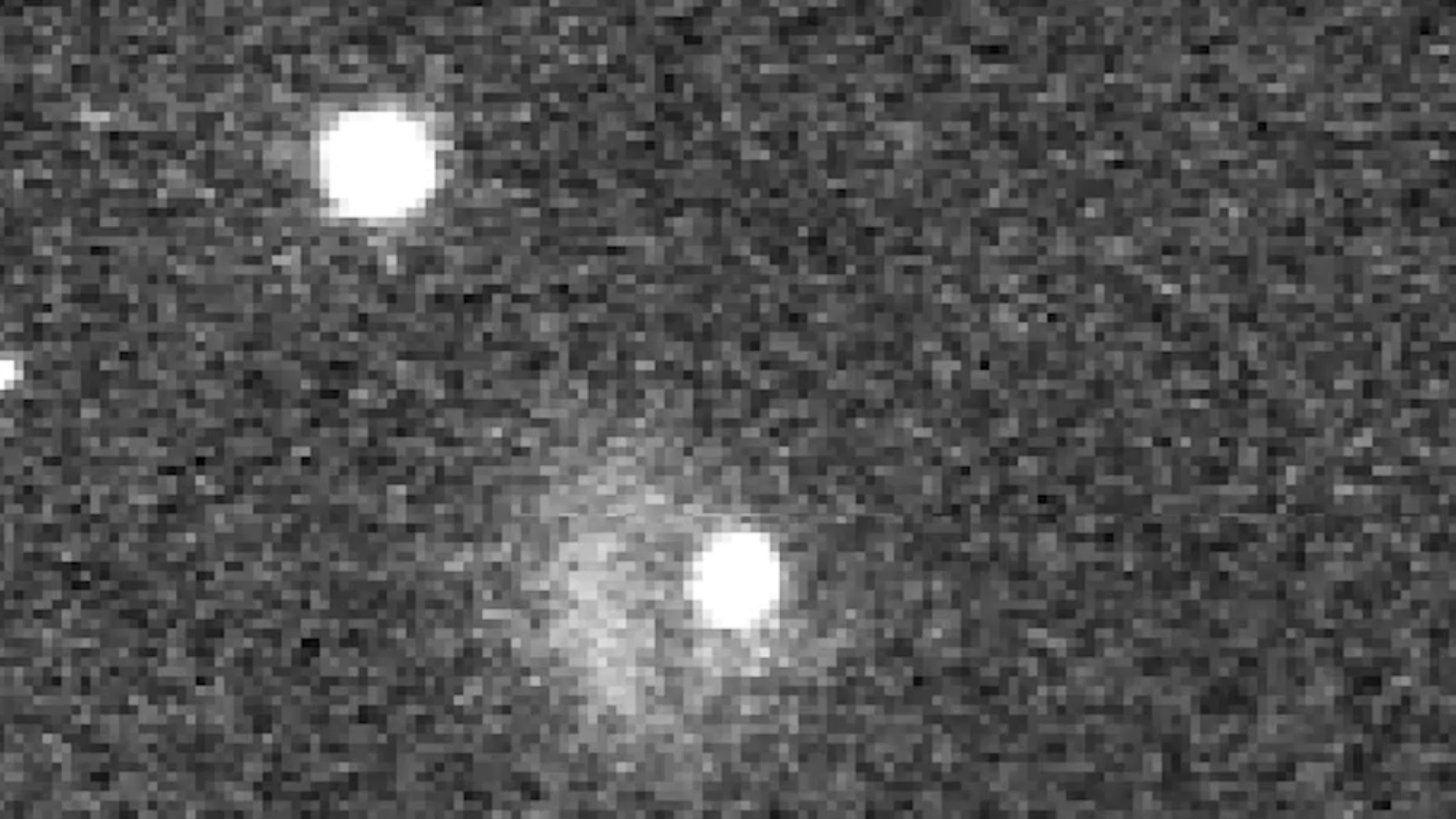First kinetic impact test succeeds in shifting asteroid orbit
The kinetic impact of NASA’s DART spacecraft with the Dimorphos asteroid around its larger Didymos parent body has succeeded in shifting its orbit, meaning humankind’s first planetary defence test has been successful. Observations are continuing of the debris plume caused by the collision for as long as possible, as the asteroid system gradually recedes from Earth.

As a next step ESA’s Hera mission will return to the double asteroid system to investigate the consequences of the impact, gathering close-up data to turn this experiment in a scalable, repeatable technique that might one day be used for real.
“The next mission to fly to the Didymos system is going to be the Hera mission, planned by ESA, a multinational endeavour to go back to the system and get a chance to look at it again a little later on,” commented Lori Glaze, Director of NASA’s Planetary Science Division.

Prior to DART’s impact, it took Dimorphos 11 hours and 55 minutes to orbit its larger parent asteroid, Didymos. Since DART’s intentional collision with Dimorphos on 26 September, astronomers have been using telescopes on Earth to measure how much that time has changed.
Now, the investigation team has confirmed the spacecraft’s impact altered Dimorphos’ orbit around Didymos by 32 minutes, shortening the 11 hour and 55-minute orbit to 11 hours and 23 minutes. This measurement has a margin of uncertainty of approximately plus or minus 2 minutes.

Before its encounter, NASA had defined a minimum successful orbit period change of Dimorphos as change of 73 seconds or more. This early data show DART surpassed this minimum benchmark by more than 25 times. The investigation team is still acquiring data with ground-based observatories around the world – as well as with radar facilities at NASA Jet Propulsion Laboratory’s Goldstone planetary radar in California and the National Science Foundation’s Green Bank Observatory in West Virginia. They are updating the period measurement with frequent observations to improve its precision.
Focus now is shifting toward measuring the efficiency of momentum transfer from DART’s roughly 6.1-km-per-second collision with its target. This includes further analysis of the ‘ejecta’ – the many tons of asteroidal rock displaced and launched into space by the impact. The recoil from this blast of debris substantially enhanced DART’s push against Dimorphos – a little like a jet of air streaming out of a balloon sends the balloon in the opposite direction.
To successfully understand the effect of the recoil from the ejecta, more information on of the asteroid’s physical properties, such as the characteristics of its surface, and how strong or weak it is, is needed. These issues are still being investigated.

For this analysis, astronomers will continue to study imagery of Dimorphos from DART’s terminal approach and from the Light Italian CubeSat for Imaging of Asteroids (LICIACube), provided by the Italian Space Agency, to approximate the asteroid’s mass and shape.
Then, in exactly two years from now, ESA’s Hera spacecraft will embark on its own voyage to Didymos and Dimorphos to carry out detailed surveys of both bodies, with a particular focus on the crater left by DART’s collision and a precise measurement of Dimorphos’ mass, which is needed to determine the efficiency of the DART impact.
Hera’s payload module is currently under construction at OHB in Germany, with its propulsion module taking shape at Avio in Italy. The spacecraft will also carry two shoebox-sized CubeSats for close-up observations.

Ian Carnelli, Hera project manager, commented: “Now that the DART mission has achieved its objective, it is up to the Hera mission to complete the experiment. The whole Hera team in ESA and industry is working around the clock to meet the launch date in October 2024. Seeing our spacecraft and payload in integration gives us confidence We are eager to provide our scientific community with the data necessary to unveil all the mysteries DART is exposing.”


Access the video
ESA contributions to DART effort
Over the course of DART’s impact, ESA’s Near-Earth Object Coordination Centre was watching. With access to telescopes around the globe, ESA’s astronomers had a direct view of the asteroid system as DART struck, capturing this remarkable footage of the birth of Dimorphos’ new plume.
In the run-up to impact, ESA was also laser-focused on this world first mission. The Agency’s Estrack network of deep space antennas supported NASA’s own, filling in gaps in the Deep Space Network to ensure tracking and data download from DART was seamless, and the mission could lock on to its relatively tiny target at vast speed.


Access the video














 Germany
Germany
 Austria
Austria
 Belgium
Belgium
 Denmark
Denmark
 Spain
Spain
 Estonia
Estonia
 Finland
Finland
 France
France
 Greece
Greece
 Hungary
Hungary
 Ireland
Ireland
 Italy
Italy
 Luxembourg
Luxembourg
 Norway
Norway
 The Netherlands
The Netherlands
 Poland
Poland
 Portugal
Portugal
 Czechia
Czechia
 Romania
Romania
 United Kingdom
United Kingdom
 Slovenia
Slovenia
 Sweden
Sweden
 Switzerland
Switzerland
























